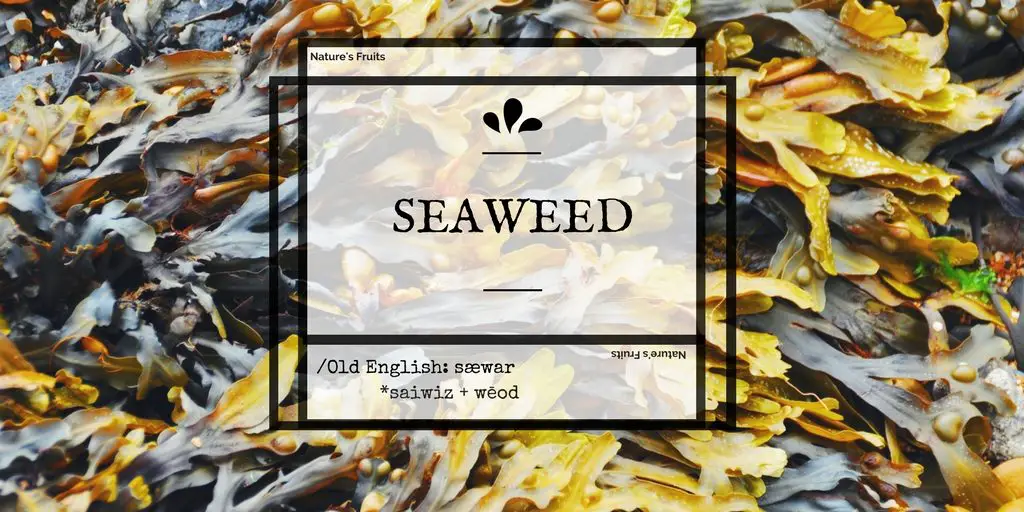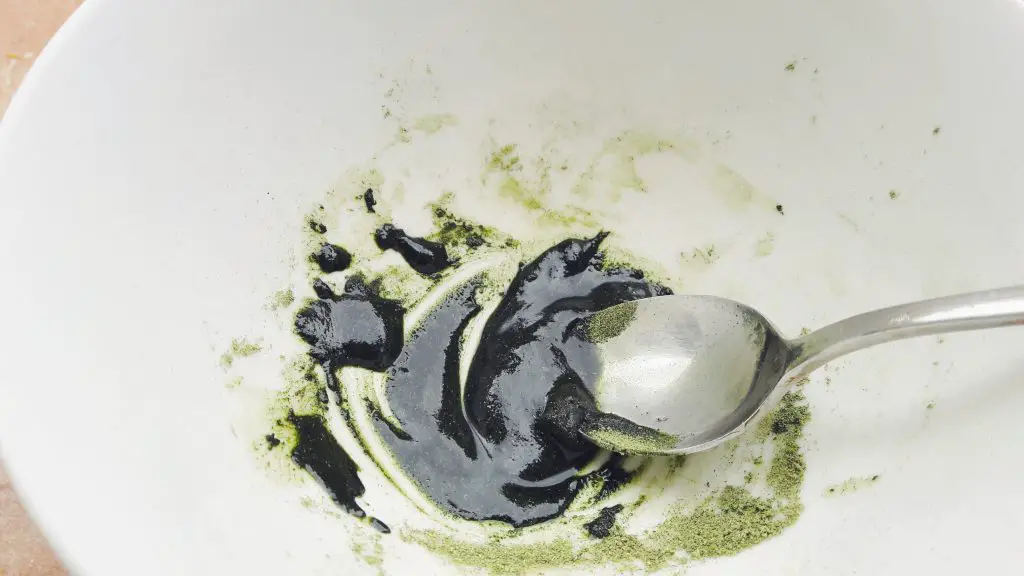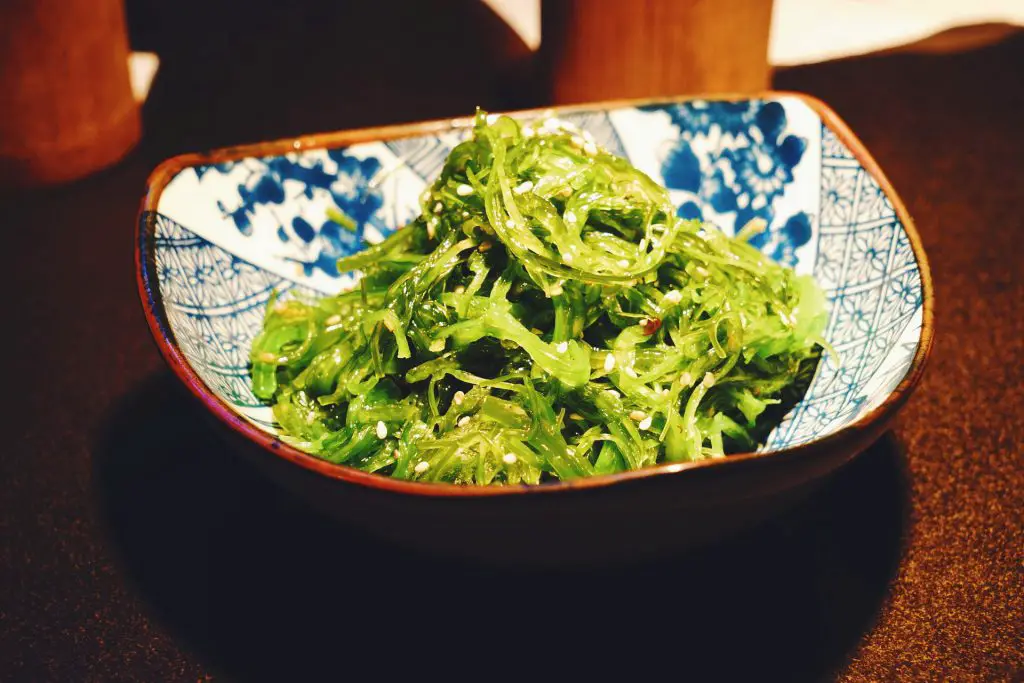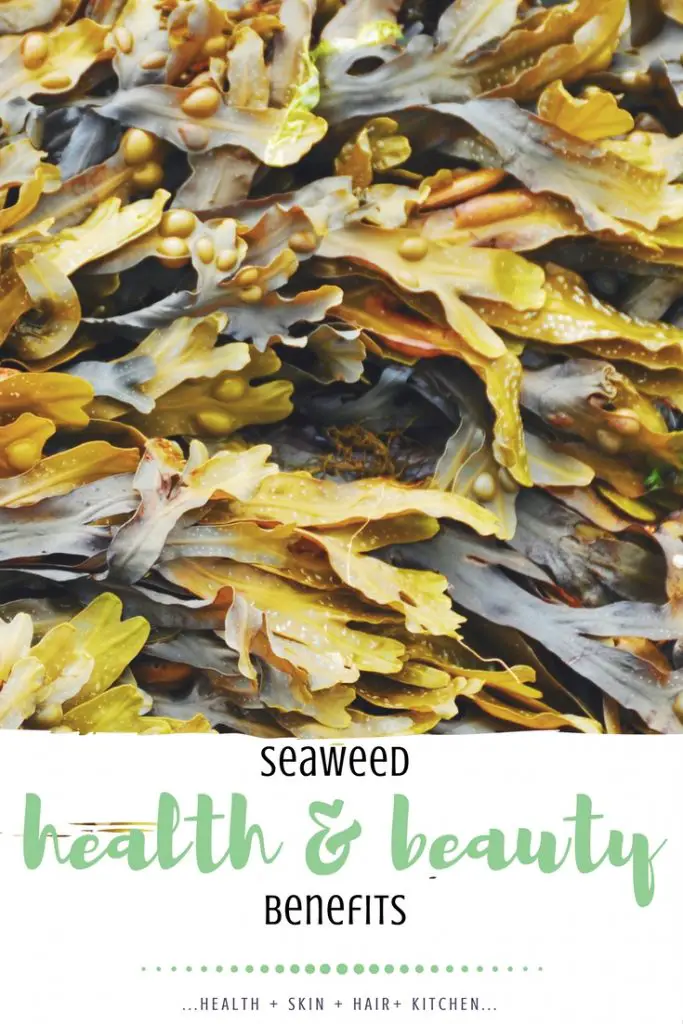Being this month of January, everything is about detox. And I am as well, both mental and physical detox. Now, I’m not the one for new year resolutions, but if I can find ways to improve my life, then count me in. And this year, January seems like a good time to start since December was just too much of everything. Anyway, detox yes, and an exotic one at that: this month’s plant is seaweed and all of the seaweed skin benefits.
Seaweed love story
Honestly, there’s not a proper love story as it was with previous plants. But since I always start with a love story, let me give you one: once upon a time I was given a pretty brown package of green powder, that was called D-E-T-O-X. The powder included a mix of spirulina and chlorella. Honestly, I wasn’t hooked because even now, I can still only add it to smoothies to make it drinkable. Luckily, I found other uses for spirulina since it possesses some important seaweed skin benefits.

On a more serious side, there are different types of seaweed, but this article is a generalization of all their traits. According to people who know things about plants, we know:
- Green algae (sea lettuce, sea grapes)
- Blue-green algae (spirulina, chlorella)
- Brown algae (wakame- the seaweed that is in my green tea)
- Red algae (nori- the seaweed they use to make sushi)
Seaweed as a source of nutrition
More or less a beneficial powerhouse, seaweed contains a high amount of nutrients that have positive effects on our health, if consumed in reasonable amounts. Seaweed is also a natural source of iodine, which is an awesome thing since our bodies need it.
On the other hand, too much iodine may cause problems that you earlier didn’t have, so that’s what I mean when I say the reasonable amount. But its positive effects don’t limit to health benefits; below you can find also seaweed benefits for skin and hair.
– Anti-inflammatory, antimicrobial and antiviral properties
– Rich in vitamins
As a great source of vitamins, seaweed contains the following: Vitamin A, vitamins C, D, E, and B, K.
– Rich in minerals
Seaweed is a very rich source of minerals. These range from calcium, iron, potassium, magnesium, copper, sodium, chromium, to iodine (with an exception of spirulina, which has a low iodine content).
– Polyunsaturated fatty acids
Rich in PUFAs (polyunsaturated fatty acids), seaweed has beneficial effects on the cardiovascular system and nervous system among others.
– Rich in fiber
Seaweed contains especially soluble fiber, which actually turns to gel and slows down the digestive process and minimizes, or stops the absorption of cholesterol and sugars. This type of fiber can also increase the feeling of fullness, which means that seaweed might be helpful for appetite control.
– Prebiotics
Seaweed contains various polysaccharides, such as agar and carrageenans that act as prebiotics. What does that mean? These prebiotics are food to probiotics, the good bacteria in our gut that take care of our gut health.
– Antioxidant properties
Rich in antioxidants, such as vitamins C and E, and phytochemicals, seaweed is a natural protection against oxidative stress which means that seaweed helps to maintain the balance between the free radical damage and our body’s ability to defend from this damage (it’s the antioxidants that boost the defense). This is one of its main reasons why seaweed benefits for skin are also very powerful and effective.
Seaweed health benefits
Since seaweed contains much more nutrients than the vegetables we grow on land, it has been gaining popularity in the past few years. But, seaweed has been used all over the world for thousands of years.
When I think seaweed, I think Japan. Next on the list is China, but the use of seaweed was also popular in the Mediterranean region with the Greeks and the Romans.
Boosts thyroid function
Iodine is the primary mineral necessary for the proper thyroid function, which our bodies can get in satisfactory amounts from the seaweed (apart from spirulina). On the other hand, too much seaweed could cause thyroid problems with too much iodine.
Improves heart health
Seaweed contains both fiber and omega3 fatty acids which both together beneficially influence the heart health.
Reduces blood pressure
Because of its minerals, seaweed may help reduce blood pressure, especially with potassium and calcium.
Regulates blood sugar
The antioxidant properties of the seaweed aid in regulating blood sugar levels and the fiber at the same time slows down the absorption of the carbohydrates, which can also aid in the regulation of sugar in the blood.
Improves digestion
Due to high fiber content, consuming seaweed may aid people dealing with constipation and other digestive problems. At the same time, seaweed contains a lot of substances that act as prebiotics (the food to the good bacteria in our gut), which are crucial to the survival of the good bacteria in the intestine system. Plus, these prebiotics have anti-inflammatory properties that additionally boost the intestine health.
Seaweed as a beauty product

Since seaweed absorbs and eliminates the toxins from our bodies, it is not only beneficial as a food or a supplement, but it can be used as a beauty product. Seaweed skin benefits all stem from its nutritional strength, the most important one being the natural protection from the free radical damage.
Seaweed skin benefits
You can benefit massively just by eating seaweed, but there’s a thing called seaweed powder and seaweed extract. Both are used in the beauty industry, and I use seaweed powder (usually chlorella or spirulina) to make my own DIY cosmetics, namely, face masks (this one is my favorite) and scrubs. With regular use (a few times a month) I have noticed my skin change due to these awesome seaweed skin benefits.
Detoxifies the skin
Packed with antioxidants, seaweed offers a natural way to detoxify the skin, by eliminating toxins or anything harmful, protecting the skin from the free radical damage.
Tightens pores
I’m not sure if it’s the brightening effects that seaweed also offers or the fact that it aids in removing pimples, but in any case, my face looks very clean and bright after every use of a face mask.
Rejuvenates skin
Seaweed helps to rejuvenate the skin, reducing wrinkles and fine lines. It also helps to deeply nourish the skin since it’s loaded with nutrients.
Moisturizes dry skin
Seaweed absorbs the moisture from the environment and adds it to the upper layer of the skin. When I’m dealing with tired and dry skin, a facial mask is one of my favorite ways to treat my face.
Seaweed hair benefits
Apparently, the Japanese have been using seaweed as a beauty product/ ingredient, years before the West has even heard of the seaweed existence. Their traditional methods apparently rely on both seaweed skin benefits (which all makes sense to me; the Japanese women do all have beautiful skin) and hair benefits, to make it strong and long (as in the movies, hehe).
First thing’s first: you don’t have to actually put seaweed on your hair to make it beautiful (but you can, if you want to). By eating seaweed, you can provide your body with enough nutrients that can also nourish the hair, supply the scalp and the roots of your hair. By providing your hair with vital minerals and other nutrients, the hair should become thicker and stronger. Seaweed hair benefits are the following:
– Hydrates the hair
– Reduces hair loss
– Increases mineralization
In case you wish to experiment, I found this website that will show you exactly how to include your seaweed powder into your hair routine, by adding it to either an existing shampoo or preparing your own mask with hot water.
Seaweed as a kitchen ingredient

Being a huge hit in the Asian culinary world, seaweed is slowly gaining popularity in the West as well. Based on its nutritional value, seaweed is a welcome addition to your diet.
How do I consume seaweed?
If you want to include seaweed in your diet, that pretty much depends on the type of the seaweed you wish to actually eat.
– Seaweed as a plant
If you’re up for some experiments, you can always prepare the seaweed and eat it at home; I found a few recipes you might be interested in. If you’re not into cooking, just hit your nearest Japanese or Korean restaurant. They probably have some seaweed for you to taste and enjoy. I actually tried seaweed for the first time when visiting Peru and I was quite happy with it. Weird, yes, but I did enjoy it in my soup. You might too!
- Rice and arame seaweed salad: if you still can’t decide on the whole algae-eating question, you might try arame seaweed since it’s milder in flavor. Easy recipe with my fave ingredients such as garlic, soy sauce, and ginger!
- Vegan miso soup, if you’re looking for a new breakfast idea, this might be your new favorite. No, I’m not kidding. Apparently the Japanese eat this for breakfast. Okay, you don’t have it. It can be lunch as well.
- Spicy shiitake mushroom roll, otherwise known as vegan sushi. In case you’ve never tried shiitake mushrooms, this is your chance. I’m a huge fan, the taste is lovely and they are to be eaten round the clock, every day (yes, I do adore them!)
– Seaweed as a powder/supplement
There are many different types of seaweed and some of them come in a powder form or in capsules/tablets, such as spirulina. The capsules might be easiest to consume since the powder is quite strong in flavor (sometimes I feel as if snacking on the grass under my window). I prefer to add spirulina powder to smoothies, as that makes it easier and more user-friendly when it comes to taste.
Spirulina chia pudding: I cannot imagine something rich and creamy, such as chocolate chia pudding could be tasty with too much spirulina, but this recipe looks so pretty, I just had to add it to the list. I mean, it’s all good things in there and I believe it’s worth a try!
What are your thoughts on seaweed? Any fave recipes?
Stay Wild!

